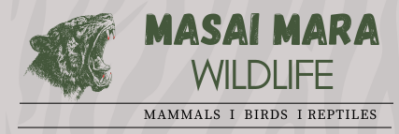- Common Names: Bushpig
- Scientific Name: Potamochoerus larvatus
- Swahili Name: Nguruwe
- Maasai Name: Olkupe
- Size:
- Head-Body Length (HBT): 220 cm (87 in)
- Shoulder Height (SH): 90 cm (35 in)
- Gestation: 17–18 weeks
Recognition and Appearance
Unlike the more familiar Warthog, the Bushpig’s entire body is covered in a hairy coat, which can vary in color from grey to black or reddish-brown. It also sports coarse white hair on its face and mane. When it runs, it holds its tail down, contrasting with the tail-up run of the Warthog.
Bushpigs have a stocky build and a snout equipped with razor-sharp tusks, which they use for digging up roots and tubers. These tusks, combined with their powerful bodies, make them formidable opponents, especially when threatened.
Habits and Behavior
- Social Structure: Bushpigs are social animals, often gathering in small groups known as sounders. A sounder typically consists of a dominant male and female, along with their offspring. However, these groups may expand temporarily when there is an abundance of food, especially during fruiting seasons.
- Aggression and Territoriality: Known for their unpredictable nature, Bushpigs are highly territorial and can be aggressive, particularly when defending their young. Though they usually avoid human contact, they have been known to charge when they feel threatened or cornered, making them potentially dangerous.
Where to Find
Bushpigs prefer dense woodland and thickets where they can hide, but they also venture into nearby grasslands in search of food. In the Masai Mara, they are typically more active during the cooler hours of the night or early morning.
Diet
Bushpigs are omnivorous, with a varied diet that includes roots, tubers, fruits, invertebrates, and even carrion. They are expert foragers and will dig up the ground in search of edible plant material, particularly in areas where food is abundant, such as fruit trees.
Reproductive Behavior
- Breeding and Piglets: Bushpigs usually give birth during the wet season when food is plentiful. A litter typically consists of 4–6 piglets, but larger litters of up to 10 have been recorded. These young are born with distinctive yellow and brown stripes, which fade as they grow older. Mothers are highly protective of their piglets and can become aggressive if they sense any threat.
Conservation Status
- IUCN Status: Least Concern. Despite their reputation and potential conflict with humans, Bushpigs have a stable population across their range. They are adaptable animals and thrive in various environments, including woodlands and grasslands. However, habitat destruction and hunting in some regions could pose threats to localized populations.
Interesting Facts
- Wallowing: Bushpigs are avid wallowers, using mud to cool off and protect their skin from parasites. This behavior is often observed early in the morning, especially near water sources.
- Foraging Tactics: They often exploit the presence of other animals, such as monkeys feeding in trees. As fruit falls, Bushpigs are quick to scavenge, often chasing away smaller animals to claim their meal.
Encounters and Safety
In the wild, Bushpigs are generally elusive and prefer to avoid contact with humans. However, in areas close to lodges or camps, they may come closer in search of food, especially under cover of night. While sightings are exciting, it’s essential to remember that these animals can be unpredictable and should be observed from a safe distance.
In conclusion, the Bushpig is a resilient, resourceful species well-adapted to the varied ecosystems of the Masai Mara. Though often overshadowed by more iconic wildlife, it remains an essential part of the region’s biodiversity.
